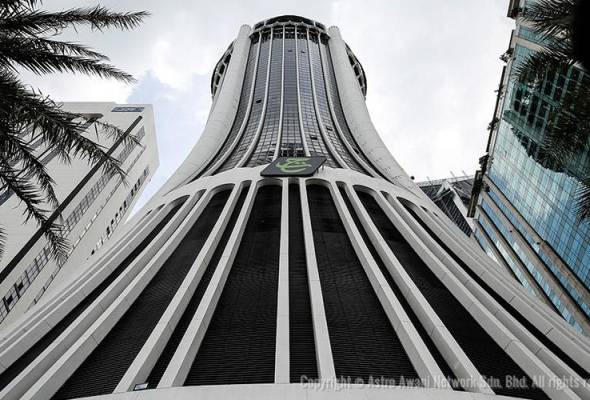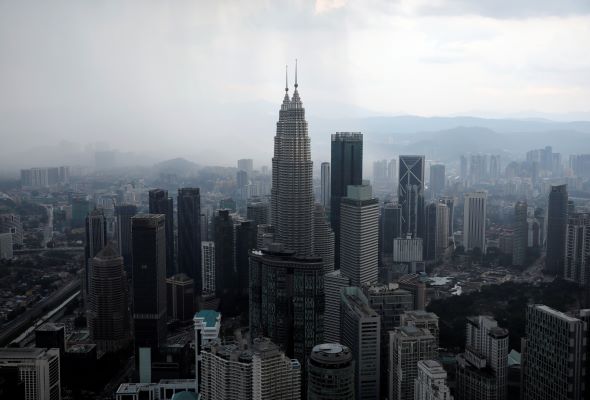
Published in Asia News Today, Business Today. Astro Awani, Bernama, New Straits Times, & Focus Malaysia, image by Asia News Today.
As tightened lockdown measures restricted people from going out for dining or work, there is an increasing usage of plastic packaging when the Covid-19 pandemic emerged since the beginning of last year.
Such a phenomenon is especially apparent when the Movement Control Order (MCO) 3.0 commenced in the whole country in mid-May.
For instance, more Malaysians prefer to order food via online delivery platforms such as GrabFood and FoodPanda. To maximise customers’ experience in enjoying takeaway food, many food and beverage (F&B) outlets first put the cooked food in a plastic container and wrap the plastic container with multiple layers of plastic to avoid spillage.
Some F&B outlets choose to separate their packaging if the customer orders noodles with soup or sauce.
To minimise virus exposure, some Malaysians choose to stay at home for weeks or months. They often order goods via e-commerce platforms such as Shopee and Lazada.
According to the Shopee Seller Education Hub, merchants have to follow four steps for simple packaging to ensure buyers receive goods in good condition:
- Wrap the item in 2-3 rounds of bubble wrap;
- Pack any accessories separately;
- Choose a box or pouch that is larger than the item. Fill the extra space with filler material; and
- Tape the openings and seams of the box or pouch.
As eating in and home cooking become more common, more families buy packed food such as bread, instant noodles, sugar and flour for daily consumption. Some organisations use plastic bags to distribute food aid to hardcore poor and B40 households who cannot afford to put food on the table.
The surge of plastic packaging during the pandemic has led to a rise in plastic production. According to the Malaysian Plastics Manufacturer Association, plastic production has grown by 0.7 per cent up to August last year, compared to five per cent in the same period in 2019.
Despite the government national Roadmap Towards Zero Single-Use Plastics in 2018, the ‘tapau’ (takeaway) culture has resulted in many hawker stalls and F&B outlets using plastic bags, the cheapest and most convenient method to pack readily cooked food.
Coupled with the rise of online delivery services, Malaysia has the highest annual per capita plastic use recorded at 16.78kg per person before the emergence of the Covid-19 pandemic.
It is relatively higher than other neighbouring ASEAN countries such as Singapore (12.5kg), Philippines (12.4kg), Thailand (15.52kg) and Vietnam (12.93kg), according to a 2020 World Wildlife Fund (WWF) Malaysia report.
The situation is getting worse when more Malaysians are purchasing online or receiving food aid in plastic bags. As a result, Malaysia used 148,000 tonnes of plastic packaging for food in 2020 alone.
Although some restaurants took steps to use cardboard or paper containers for food delivery purposes, the containers’ lids and covers still require plastics. Many F&B outlets also use plastic bags instead of paper bags for delivery as rainwater would soak into the paper bags during the rainy season.
As of now, there is no solution to replicate plastics properties of being lightweight, transparent, waterproof and durable that could seal the food container packaging effectively, according to Team Recycler, a start-up in Malaysia that provides greener solutions for takeaway packaging.
Although it is challenging to eliminate plastic packaging, Malaysian citizens could do their part by stop buying unnecessary things online.
Before making an online purchase, the individual could take a moment to ask these questions: Do I need it? What is the underlying reason for wanting to purchase it?
These questions would help the individual better in identifying the required items besides reducing unnecessary consumption and the plastic packaging that items are shipped in or delivered.
However, if the individual does not have time to cook in the work-from-home (WFH) environment, the option not to receive plastic cutlery could be chosen when ordering food online. After consumption, the individual either could wash and reuse the plastic container to store items. Or else, the individual could throw it into recycling bins if not planning to reuse it.
Moreover, the prolonged lockdown also provides Malaysians with the opportunity to grow their own food, given that they have empty space in their residence. Instead of purchasing vegetables that use plastic for packaging, Malaysians could enjoy eating fresh homegrown vegetables.
With a mini garden inside a residence, stressed-out individuals or families could enjoy a good indoor environment, air quality and well-ventilated indoor spaces. They could also relax their minds through gardening.
To further reduce plastic usage, individuals or households could substitute plastic storage containers (i.e., rice storage and soap dispenser) with glass storage ones. Glass storage containers provide a longer shelf lifespan compared to plastic.
Although Malaysia is committed to moving towards a circular economy, the current administration should work closely with businesses and green groups, introducing a system to encourage consumer goods firms to use less plastic packaging and fund better recycling schemes.
By involving the private sector, the government could expedite product redesigning, introduce new business models, upgrade delivery mechanisms, apply new recycling technologies, enhance the experience of producer responsibility from other markets and accelerate project financing.
In addition, the government could tax manufacturers, product processing and packaging centres for their use of plastic. With the tax imposition on plastic packaging, Malaysia could consider setting more ambitious targets than the current Malaysia Sustainable Plastics Alliance (MaSPA) targets.
For instance, Malaysia could set ambitious goals to achieve 100% plastic packaging to be recyclable/reusable/compostable, and enable 15% average recycled content across all plastic packaging by 2025 instead of 2030.
Moreover, the government could provide subsidies and zero taxation for sustainable raw materials and products, encouraging industrial players to produce environmentally-friendly instead of conventional plastic packaging.
Environmentally-friendly packaging could come from agricultural waste (i.e., plant starch from corn, sugarcane or beet pulp), biodegradable packing peanuts, corrugated bubble wrap, mushroom-based packaging, recycled cardboard and paper, post-consumer recycled plastics and organic fabrics.
Besides reducing the carbon footprint of packaging manufacturing, environmentally-friendly packaging could protect the ocean habitat.
The government also needs to apply stricter monitoring and enforcement mechanisms to severely punish those who throw plastic packaging into rivers or surroundings.
In a nutshell, all Malaysians must come forward and work together with the government in reducing plastic packaging. This would stimulate a healthy lifestyle among individuals and communities aside from meeting the nation’s environmental agenda.
Amanda Yeo is Research Analyst at EMIR Research, an independent think tank focused on strategic policy recommendations based on rigorous research.

